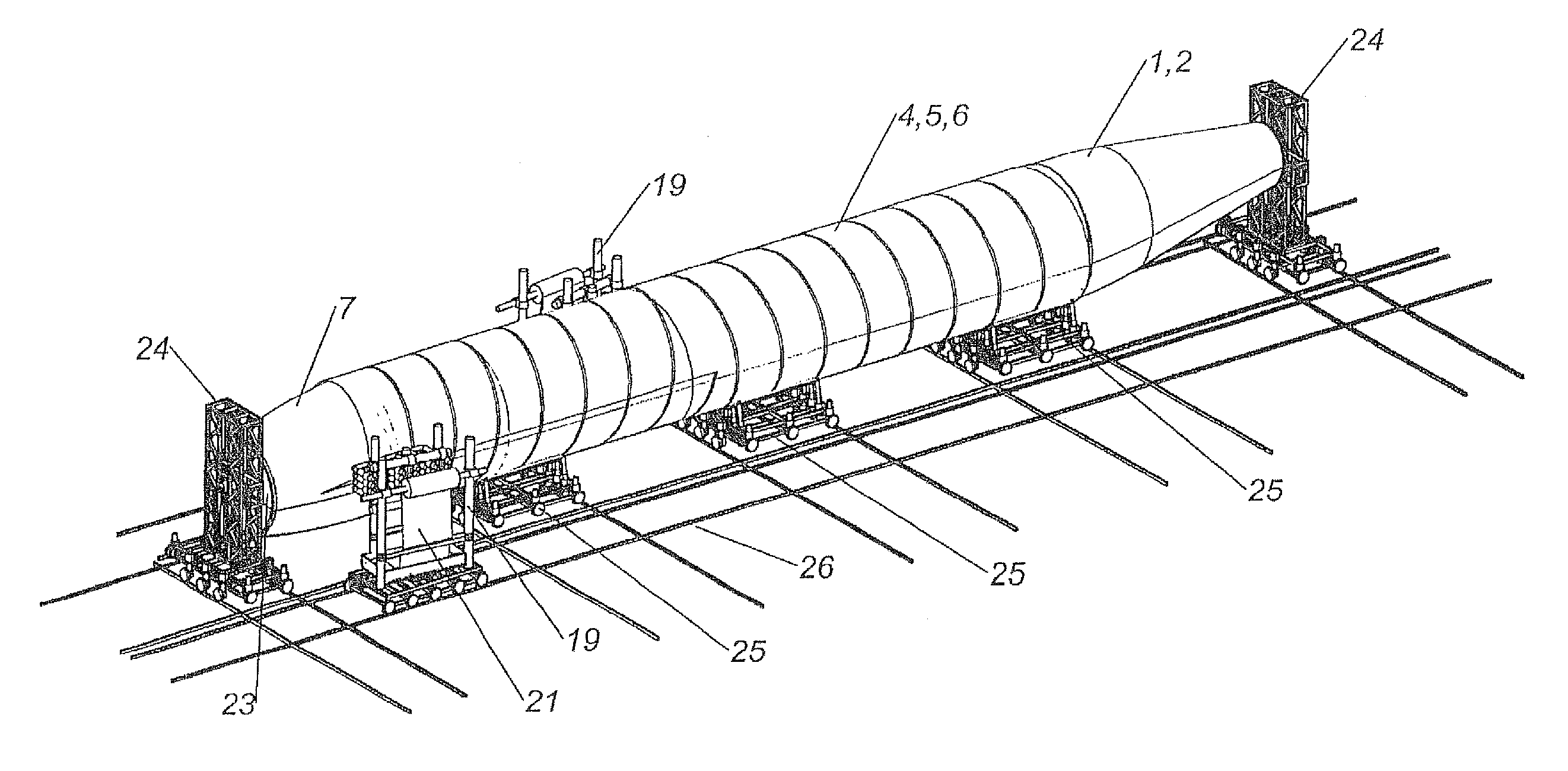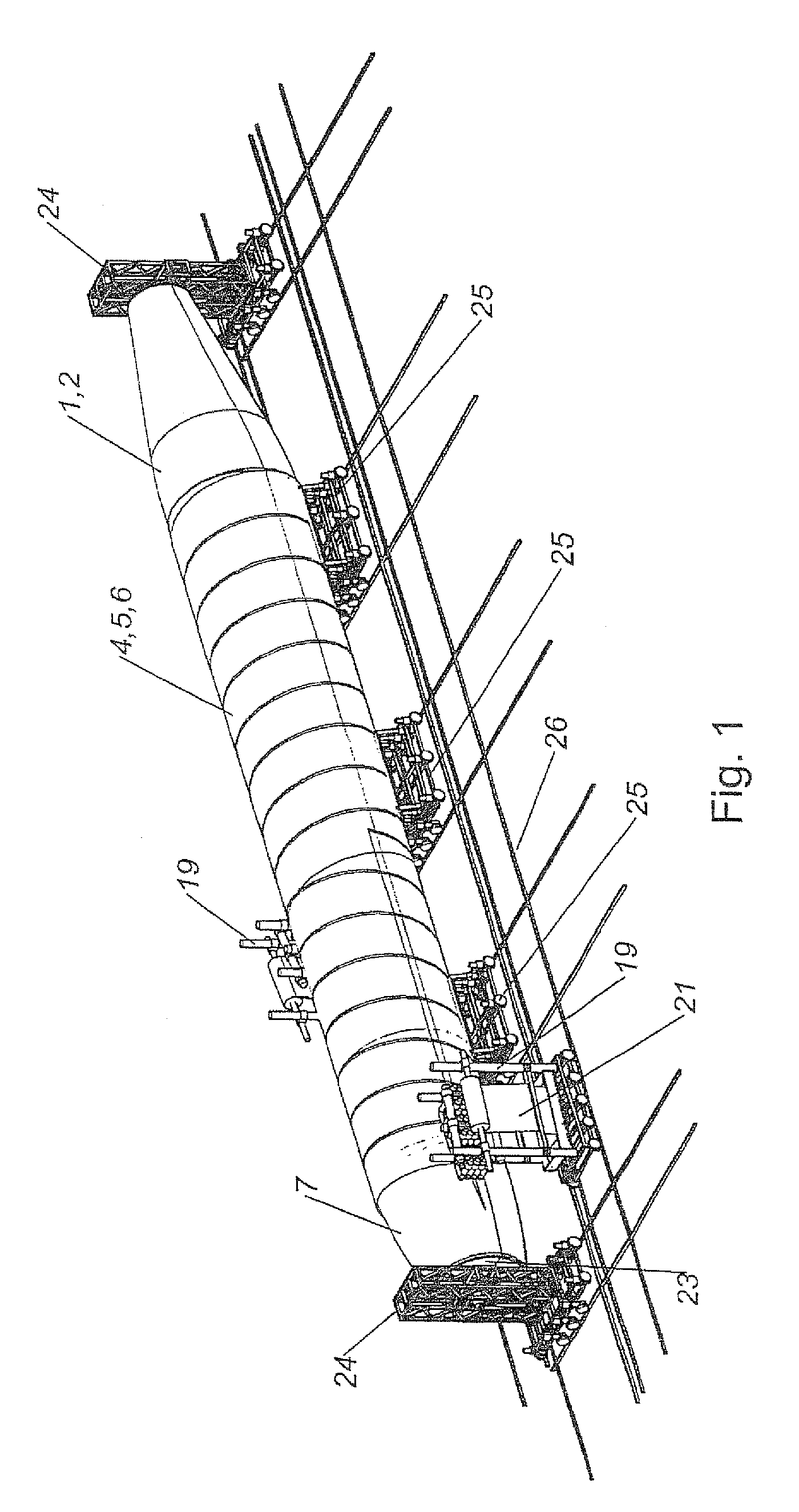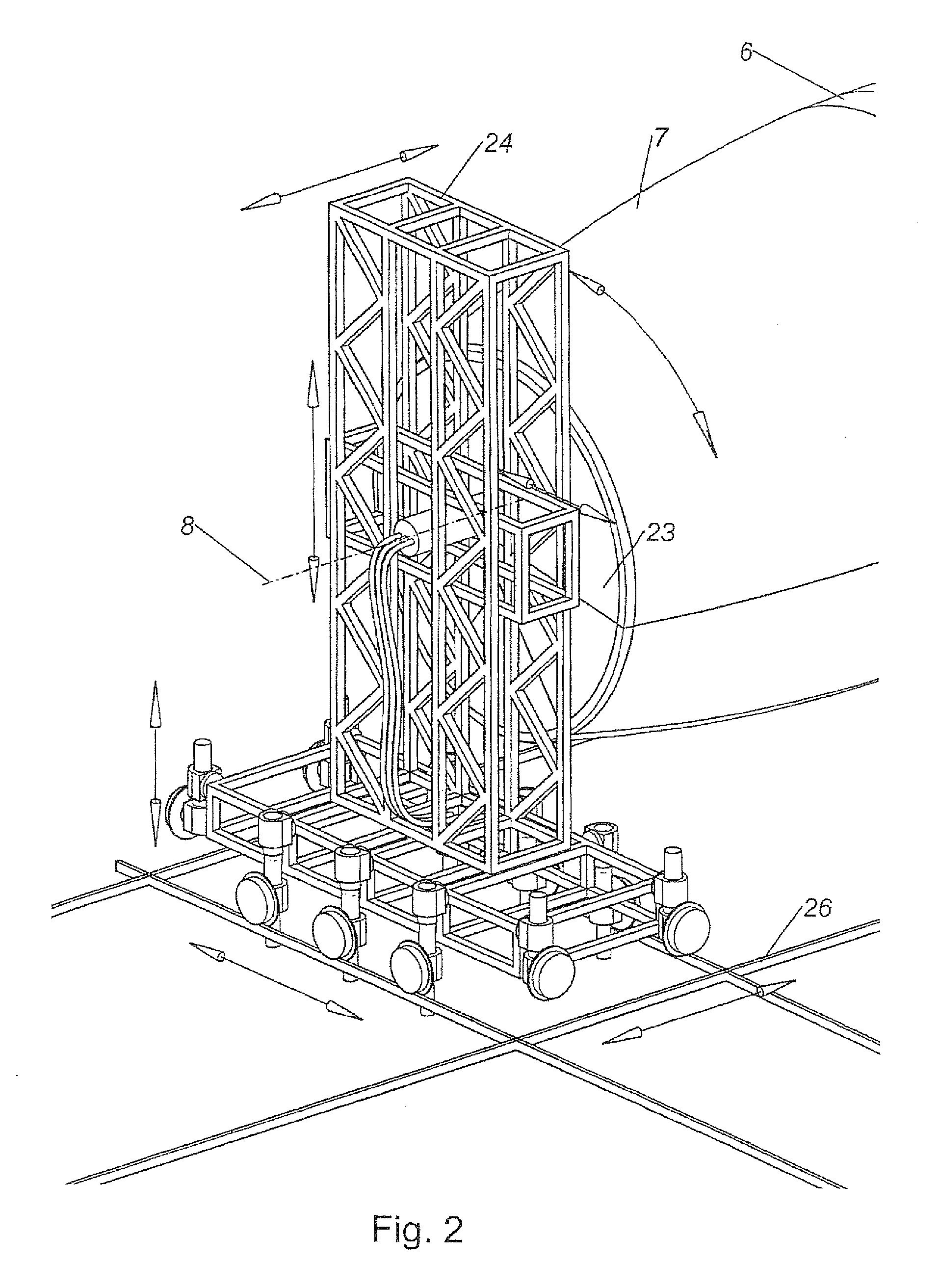[0013]Even a large-volume cavity can thus be formed simply, rapidly, and cost-effectively, which has a low weight and a high mechanical
carrying capacity in relation to its size. Through the method according to the invention, a hollow body, in particular an aircraft
fuselage or a tank, for example, for liquids or gases, can be formed, which can be manufactured in one piece, manufacturing of this type in one piece also being readily possible in the case of large units, such as the
fuselage of a wide-body aircraft. Through the production in a single piece or component, additional, in particular
metal connectors can be dispensed with. By dispensing with additional connectors and the
assembly of multiple segments, it is not necessary to
cut through the
fiber strands of the
fiber material, whereby the full advantages of fiber composite materials may be exploited. Not only is weight thus saved, but the hollow body produced according to the invention also has fewer weak points and thus a better
carrying capacity as well as a longer service life.
[0014]Furthermore, the use of multiaxial fabric can be eliminated by the
helical winding of the plies of the inner layer, because the individual plies may each be wound at different angles in different work steps during the construction of the inner layer, the possibility exists through the construction of this type of forming an inner layer which has fiber strands which run in all required specifiable directions. A hollow body, produced by a method according to the invention can thus be constructed from essentially unidirectional fabric. The use of a fabric of this type, in which essentially
all fiber strands are situated parallel to the longitudinal extension of a web of the fabric, has the advantages that a fabric of this type is significantly more cost-effective than a multidirectional fabric, and additionally has significantly fewer areas between the individual fiber strands which are difficult to access. A unidirectional fabric hardly has any crossing points of fiber strands. Because most of the fiber strands are situated parallel, they may be penetrated simply by resin. In addition, unidirectional fabric can be laminated very successfully using rollers and presses. Through complete
wetting, the disadvantages at
crimp points may be reduced, because the handling of unidirectional fabric is simpler. A correspondingly formed hollow body will therefore have significantly fewer or no cavities within the fiber
composite material. In addition, it is provided as per the method according to the invention that the inner layer is implemented accordingly. Therefore, even if a small number of cavities do occur in the fiber
composite material, they are not subjected to the same temperature changes as in typical constructions, in which the outer
skin of an aircraft is constructed in this manner. Therefore, from the plethora of the described reasons, a treatment in an
autoclave can be dispensed with in the case of a hollow body produced as per the method according to the invention. In addition, a hollow body formed in this manner has a significantly better resin / fiber ratio than a comparable hollow body formed from multidirectional fabric, and therefore a significantly lower weight at equal volume and better strength, and less susceptibility to temperature change, as well as less
material fatigue. The costly and environmentally-harmful
air freight transport of individual segments can also be dispensed with by dispensing with the treatment in an
autoclave.
[0015]Furthermore, using the inner layer as a load-bearing inner layer has the benefit that the outer layer may be kept very thin-walled, because it is only required for shaping, and / or for protecting an insulating layer. This has the
advantage that damage of the outer layer does not cause weakening of the load-bearing structure and can be repaired very simply.
[0016]Aircraft fuselages produced by a method according to the invention have a significantly better
carbon dioxide balance than typically produced aircraft fuselages. In addition, they are lighter, because of which an aircraft having a fuselage of this type requires less fuel, and, in addition to lower production and therefore also acquisition costs, also has lower operating costs, connected to a higher
operational reliability.
[0019]With a device according to the present invention, the shortcomings encountered in the prior art involving
wetting of essentially all fibers of the fiber material, causing areas in the fiber material in the absence of resin and thus representing weak points of a fiber
composite material, is eliminated. Good
wetting or penetration of a fiber material with resin can thus now achieved in a continuous method with a device according to the invention. Through the repeated submersion, combined with the intermediate phases in which the fiber material is situated outside the resin, the resin can have enough time to penetrate into the intermediate spaces of the fiber material.
 Login to View More
Login to View More 


